IGCP 30 Year Impact Report
Chapter 2
Living Alongside Gorillas

The success of mountain gorilla conservation depends on addressing the competing needs of the gorillas themselves and the livelihoods of local communities. Most people living near the forested slopes of the Virunga, Volcanoes, Mgahinga and Bwindi Impenetrable parks are subsistence farmers, surviving below the poverty line.
The basic needs and expectations of people living in these areas can pose the greatest threats to mountain gorillas and their habitat, yet they are also the people who offer the best opportunity for effective and sustainable wildlife and habitat protection. IGCP has been working in partnership with local communities in the mountain gorilla range to:
- Create opportunities for communities to benefit directly from mountain gorilla conservation.
- Support genuine partnerships with communities who are enabled to be stewards of mountain gorilla conservation.
- Effectively manage and reduce conflict between people and wildlife.
Sharing the Benefits
IGCP has been working with government agencies in Uganda (Uganda Wildlife Authority), Rwanda (Rwanda Development Board) and DRC (Institut Congolais pour la Conservation de la Nature) to develop and institutionalize benefit sharing arrangements between protected areas and neighboring communities.
In 1997, IGCP worked with Uganda Wildlife Authority (UWA) to develop a revenue sharing programme and policy and established mechanisms for its application around Bwindi Impenetrable National Park and Mgahinga Gorilla National Park. UWA now shares 20% of park entry fees with local governments as a conditional grant for supporting projects for the benefit of communities living alongside the gorilla habitat.
The scheme ensures strong partnership between protected areas management, local communities and local governments for managing wildlife resources sustainably in and around protected areas.
In Rwanda, in 2005 IGCP helped develop and introduce a revenue sharing program. This now allocates 10% of the revenue from gorilla permits to be invested in community livelihood projects. The scheme aims to ensure sustainable conservation of the national park, with neighboring community participation, by contributing to the improvement of their living conditions. In the last decade, tourism revenue sharing has contributed more than 1.2 billion Rwandan francs (US$1.5 million) to 301 projects around Volcanoes National Park.
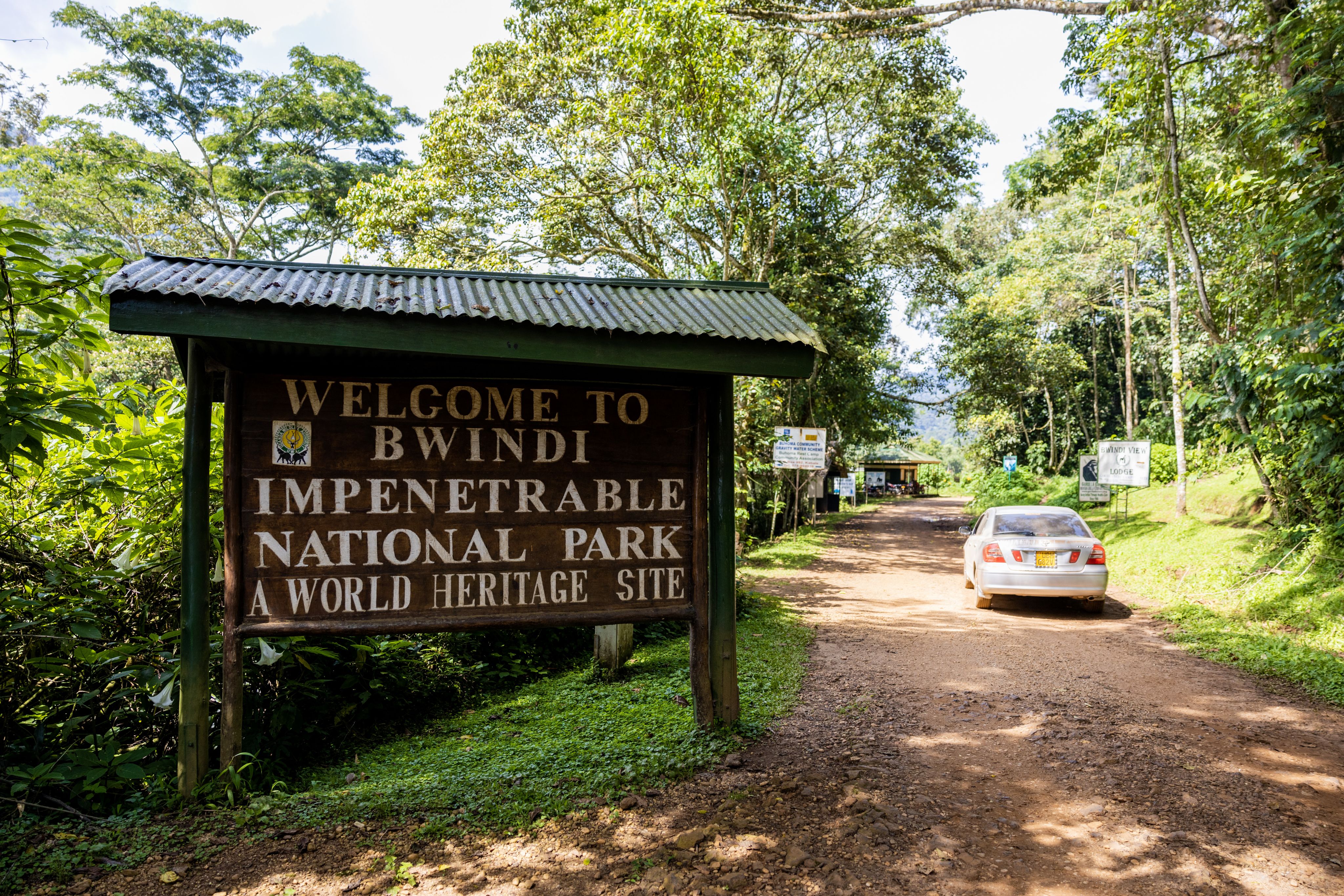
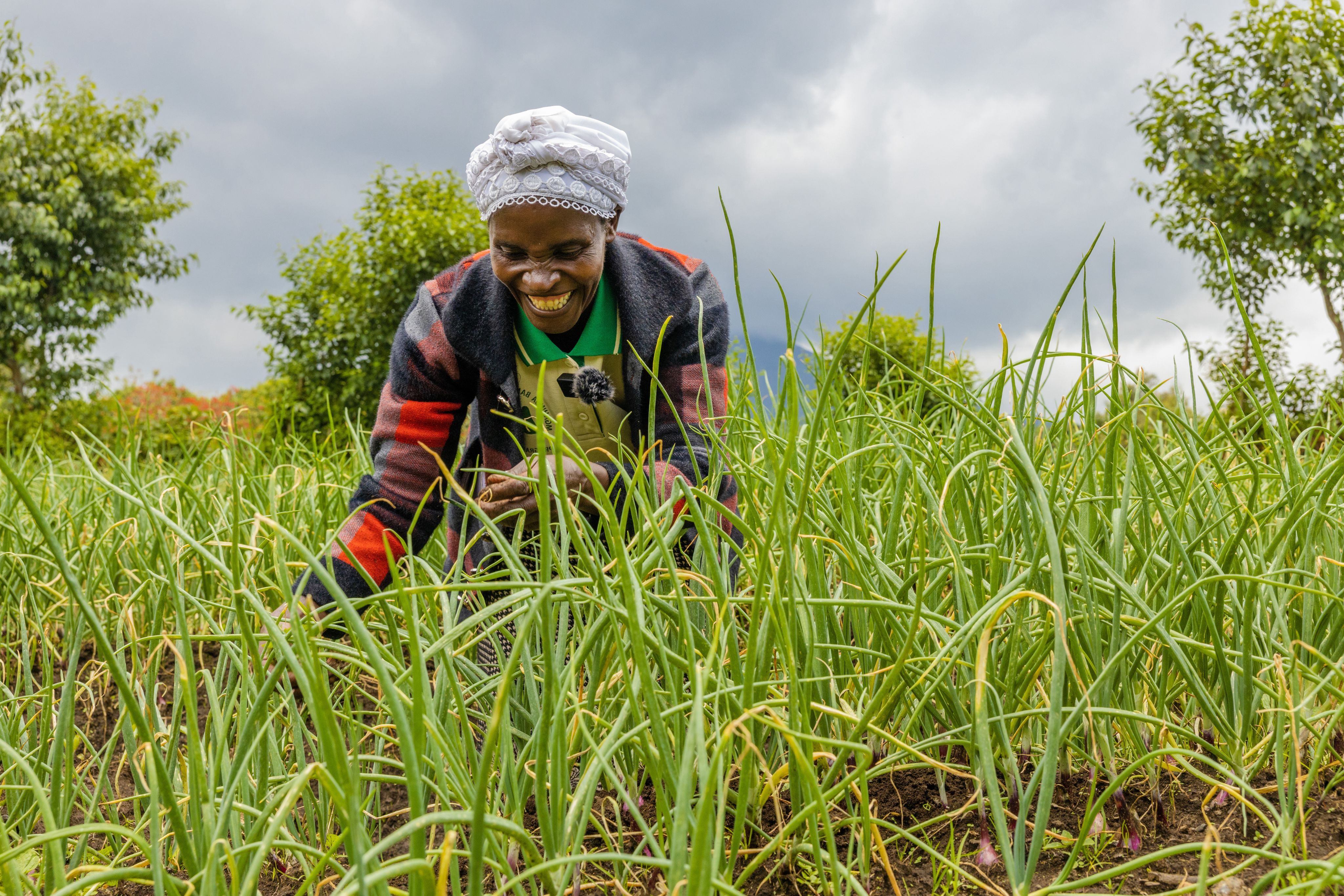
Economic Opportunities
Over the last three decades, IGCP has supported the development of nature-based enterprises linked to tourism and resources within the protected areas. These aim to provide alternative revenues for local people, to build and sustain their support for mountain gorilla conservation.
Community Owned Lodges
IGCP has supported or lobbied for the establishment of two community-owned lodges and one community-operated campsite around Volcanoes and Bwindi Impenetrable national parks. The lodges demonstrate the value of mountain gorilla conservation through the substantial tourism revenues that support community social development and livelihood initiatives.
The investments have strengthened relationships between the community and the parks and improved how the community regards mountain gorilla conservation.
©️Sabyinyo Lodge
©️Sabyinyo Lodge
Sabyinyo Silverback Lodge
Rwanda
Rwanda’s first community-owned lodge is owned by Sabyinyo Community Livelihood Association, a community trust in Musanze District.
©️IGCP
©️IGCP
Clouds Mountain Gorilla Lodge
Uganda
Owned by Nkuringo Community Development Foundation, a community organization in Bwindi Impenetrable National Park.
©️IGCP
©️IGCP
Buhoma Community Rest camp
Uganda
Established in 1993, and owned by Buhoma Community Development Association, a community organisation in Bwindi Impenetrable National Park.
Nature Based Enterprises
Traditionally, communities living alongside national parks relied on the forests throughout the mountain gorillas’ range for their livelihoods and income. This pressure contributed to forest degradation, which affected wildlife and the ecosystem services that local people relied on. But in the early 1990s this threat was significantly reduced thanks to conservation initiatives and improved law enforcement.
To reduce this pressure on protected areas, IGCP promotes nature-based enterprises such as beekeeping, crafts and basketry, cattle rearing, and growing mushrooms, garlic, onions, and other vegetables. These initiatives also help local people to diversify their income-generating opportunities, and they demonstrate links between conservation and livelihoods.
To ensure these enterprises are sustainable, IGCP has helped to create community associations and to develop their entrepreneurial and governance capacity, as well as their value chains and market development. Nature-based enterprises have boosted household incomes among communities living alongside national parks and reduced their dependence on the parks’ resources.
Some examples are:
Beekeeping
IGCP helped to set up beekeeping enterprises and honey value chains through UDASEMINYA (Beekeepers Association) around Virunga National Park, DRC.
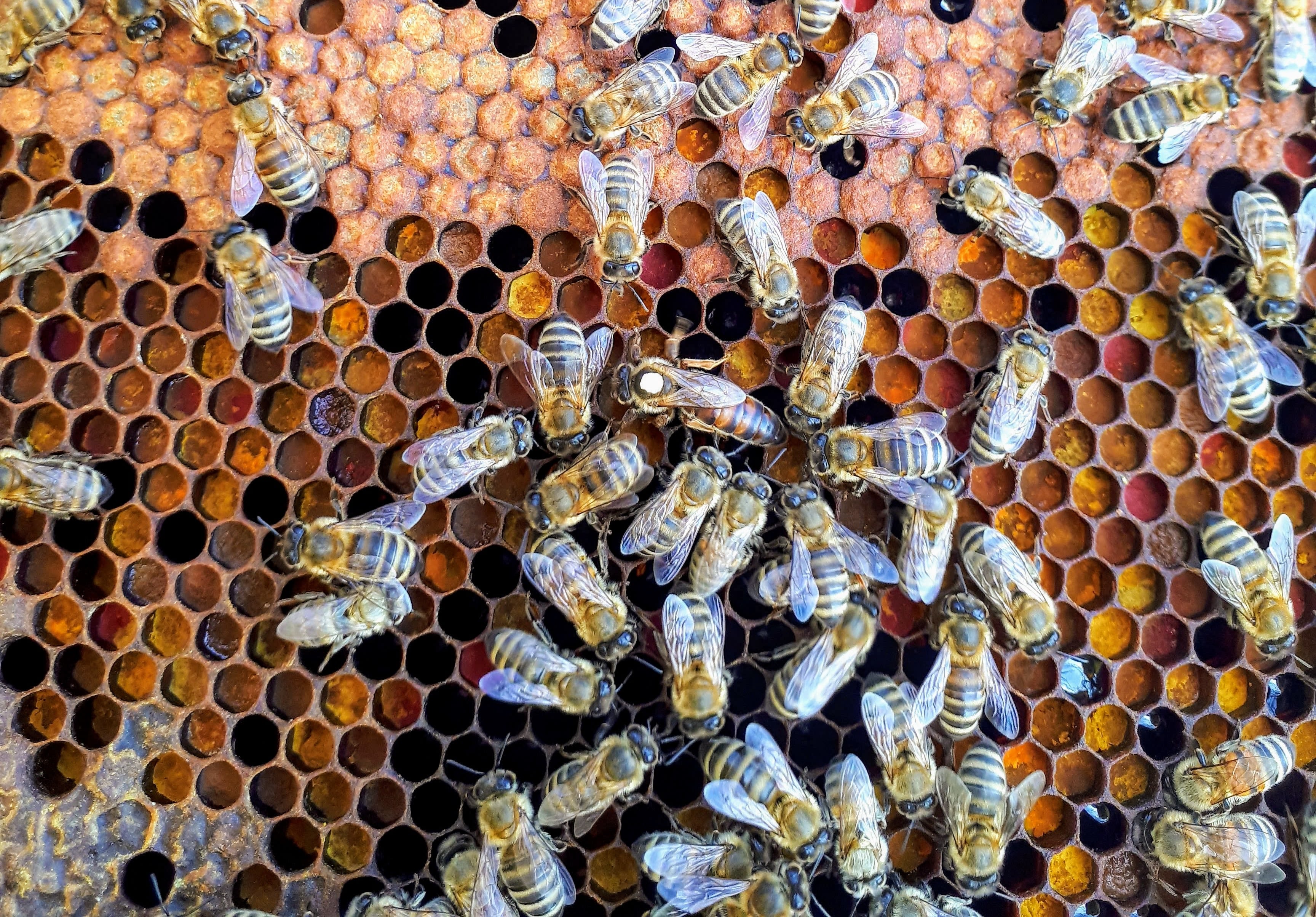
Artisan Groups
IGCP supported the Nkuringo Women Artisan Group, who have increased their income through creating and selling crafts to tourists. This support involves education and awareness with the women on biodiversity conservation and tourism and promoting cultural practices and skill development.
"We earn income from our investments in craft making that assists us in meeting most of our household needs like paying school fees and medical care for our children, buying clothes and decent meals. We no longer rely on Bwindi Forest for our livelihood"
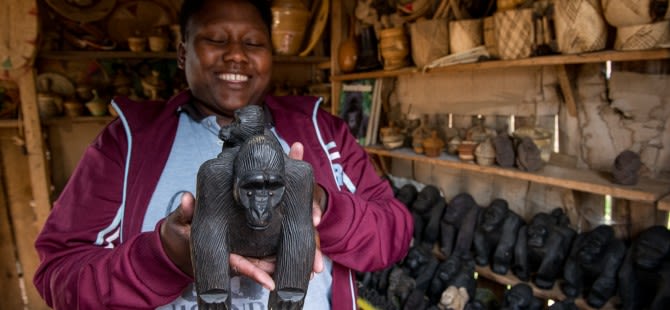
Gorilla FriendlyTM Park-Edge Community Products
Between 2012 and 2015 IGCP partnered with Wildlife Friendly Enterprise Network (WFEN), to develop and implement an eco-label – Certified Gorilla Friendly™ Park Edge community Products. The certification focuses on balancing the demand for tourism revenue with the need to protect mountain gorillas, while ensuring robust community enterprises are developed for sustainable livelihoods in and around gorilla habitat.
In 2021, WFEN and IGCP piloted the scheme in the Volcanoes National Park, with IGCP actively engaging with community enterprises and providing technical support to build environmental awareness and to develop business and marketing skills.
IGCP and WFEN conducted an outreach in 2021 around Volcanoes and Bwindi Impenetrable National parks. Several community enterprises were engaged - providing technical support to build environmental awareness and to develop business and marketing skills.
The outreach included product assessments that resulted in twelve enterprises qualifying for the Gorilla Friendly™ Park Edge community Products Certification:
Enterprises Certified around Volcanoes National Park:
- Red Rocks Initiative for Sustainable Development
- COOPAV-Mararo
- UNICOOPAV
- Hangudushamumigano
- Imbereheza Gahunga
- Iteganyirize Kinigi
Enterprises Certified around Bwindi Impenetrable National Park:
- Ride 4 A Woman
- Change A Life Bwindi Women Weavers
- Rubuguri-Nteko Handicraft Cooperative Society
- Bwindi Community Nutrition Project
- Community Initiative for Biodiversity Conservation
- Rubuguri Reformed Poachers Turned Market Gardeners.
"We believe this is a great opportunity to access new markets, receive capacity building that will upscale our cooperatives, and be ambassadors for gorilla conservation."

Providing Alternatives to Park Resources
IGCP supported the construction of water-harvesting tanks that provide clean water for communities and reduce the need for people to enter national parks in search of water. This has also helped to reduce conflicts over access to water resources, the risk of disease transmission, and illegal harvesting of forest resources.
IGCP also helped to alleviate storm water damage to livelihood assets around Volcanoes National Park by constructing water retention dams along hotspot areas in Kinigi and Kibumba – and it plans to invest in similar initiatives around Virunga National Park.
©️IGCP
©️IGCP
Human-Gorilla Co-existence
Conflict between people and wildlife is a concern for local people in all three countries where mountain gorillas live. The lives and livelihoods of local communities are affected when their crops are raided by buffaloes, elephants and, more rarely, gorillas.
Respondents to a 2014 ‘necessities’ survey conducted by IGCP reported human-wildlife conflict (loss of crops, property, or life because of wildlife) as the biggest personal (37%) and community (57%) cost of living near the parks. IGCP engages with local communities on addressing human-wildlife conflict, environmental education, community-based monitoring, benefit sharing and more.
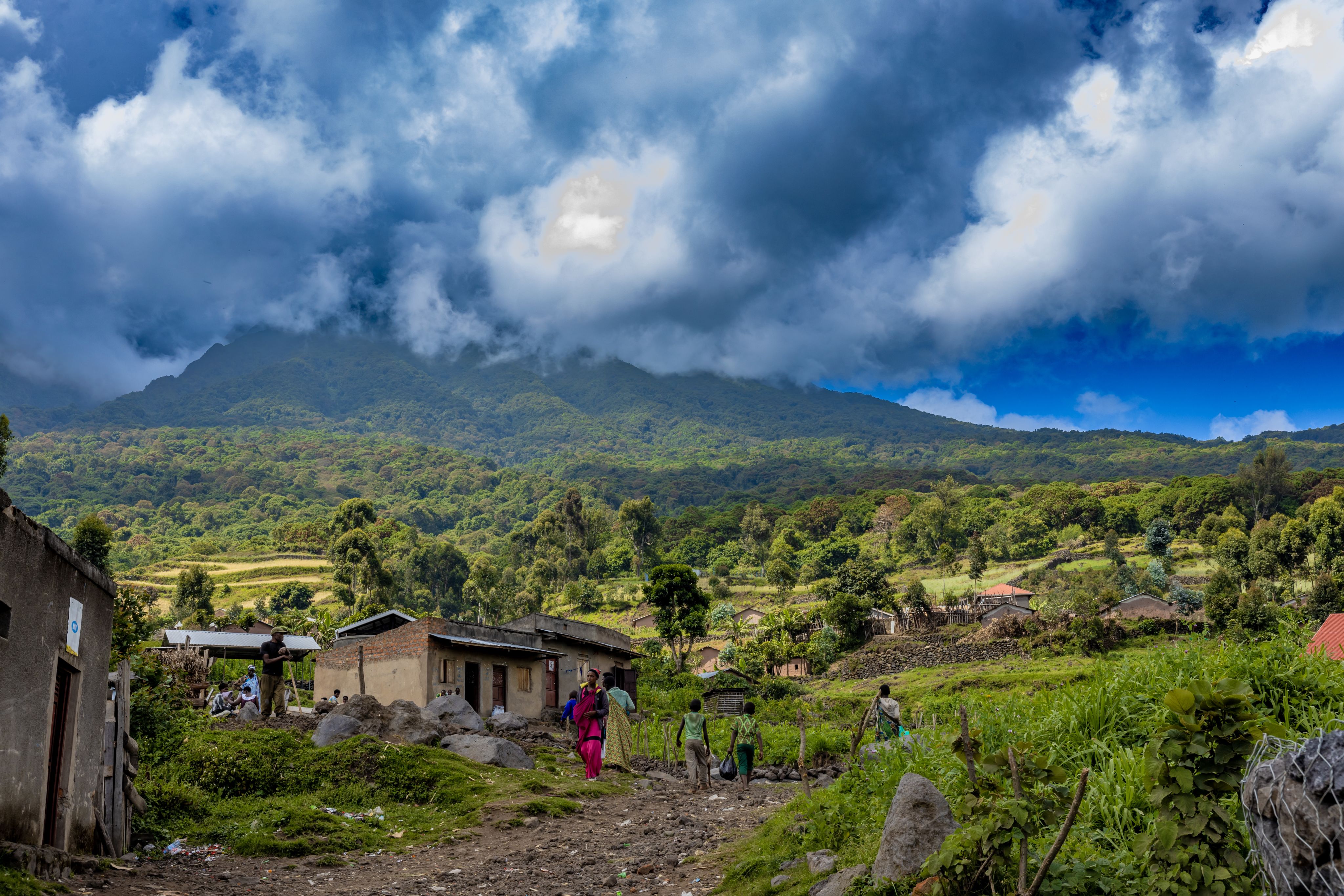

Infrastructure
Since 2004, IGCP has supported the construction of barriers to deter large mammals from exiting the park. Ideally, large mammals would be able to roam freely, but land-use changes, habitat loss and surrounding human populations mean there is no suitable habitat for mountain gorillas and other large mammals outside the park boundaries. Stone walls built by local communities using lava rocks have reduced the movement of wildlife such as buffaloes and elephants outside the park. IGCP and park authorities have supported and maintained the following walls:
- 16 km along the boundary of Mgahinga National Park, Uganda.
- 76 km along the boundary of Volcanoes National Park, Rwanda.
- 25 km along the boundary of Virunga national parks, DRC.
IGCP has also supported the construction of 3.5km of trenches along the boundaries of Volcanoes and Virunga National Parks to boost the effectiveness of the stone wall barrier, and a 3.5km electric fence along the Mikeno sector of Virunga national park. These actions prevent wildlife from leaving the park to neighboring communities.
In addition to stone walls, trenches, and electric fences, IGCP has supported planting crops that deter certain mammals. Together, these measures have created effective barriers to targeted large mammals – but some smaller mammals such as baboons and monkeys are able to climb and jump over the walls. The fences and walls need ongoing repairs, as elephants and buffaloes damage them.
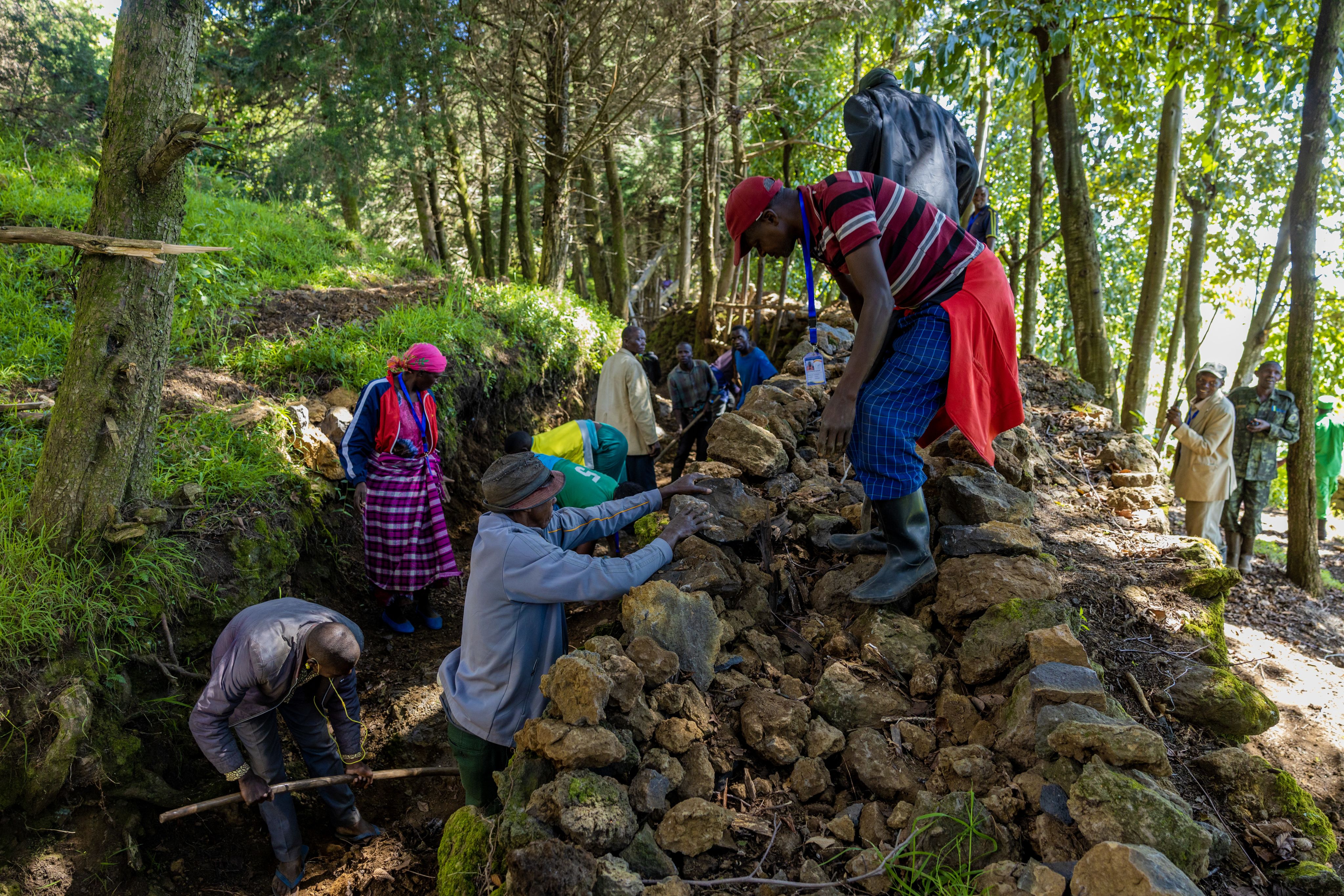
Natural Buffers
Planting unpalatable crops such as tea, wheat, lemongrass and artemisia along park boundaries creates a buffer between the park edge and people’s gardens. This is a win-win as the crops also increase disposable income for local communities. IGCP has promoted and supported this work.
In Nkuringo (Bwindi Impenetrable National Park) a buffer zone has increased community income and employment opportunities directly and indirectly through tourism and tea plantations. Tea is unpalatable for gorillas and other wildlife that can otherwise raid crops. Planting tea also helps to reduce soil erosion, which will prevent the build-up of silt in the Kashasha river in the long run.
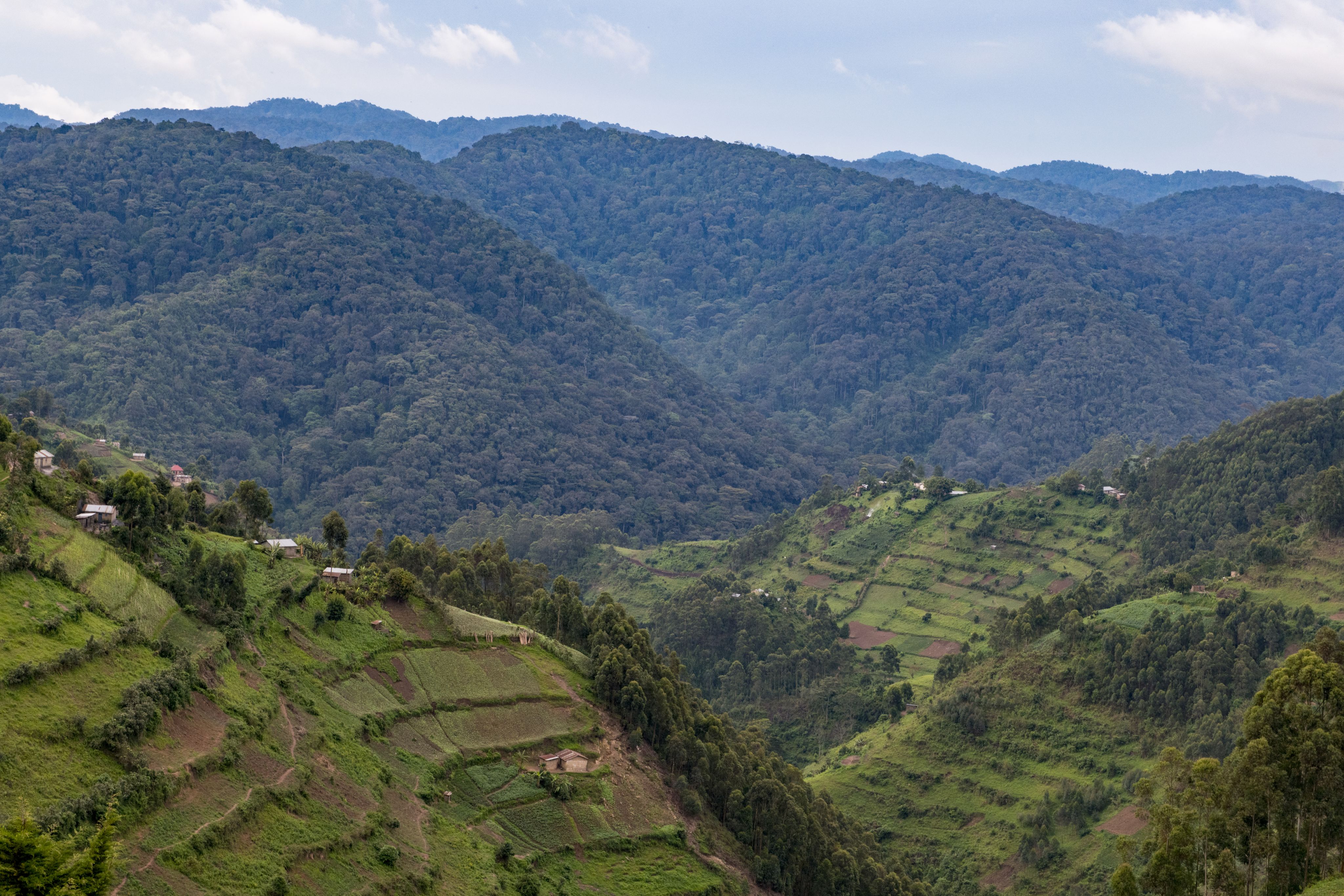
Increasing Land for Conservation
The 4.2 sq km Nkuringo buffer zone lies between cultivated community land and Bwindi Impenetrable National Park. It was purchased by the Uganda Wildlife Authority in 2003 with funds mobilized by IGCP. It is now annexed to the national park.
Prior to purchase, the land was used extensively by mountain gorillas and this caused serious conflict between local people and gorillas. IGCP championed the initiative to purchase the buffer area, which has helped to reduce human-wildlife conflict, increased land for mountain gorilla conservation, increased tourism revenues, and helped to combat transmission of disease between humans and gorillas.
To help the buffer zone to deliver direct benefits to communities, IGCP lobbied for the establishment of Clouds Mountain Nkuringo Lodge (mentioned above).
In 2005, IGCP also sponsored the creation of Nkuringo Community Development Foundation, which mobilizes the community to support mountain gorilla conservation. IGCP trained foundation members in group dynamics, governance and finance management and has supported the foundation on problem animal management and livelihood improvement initiatives.
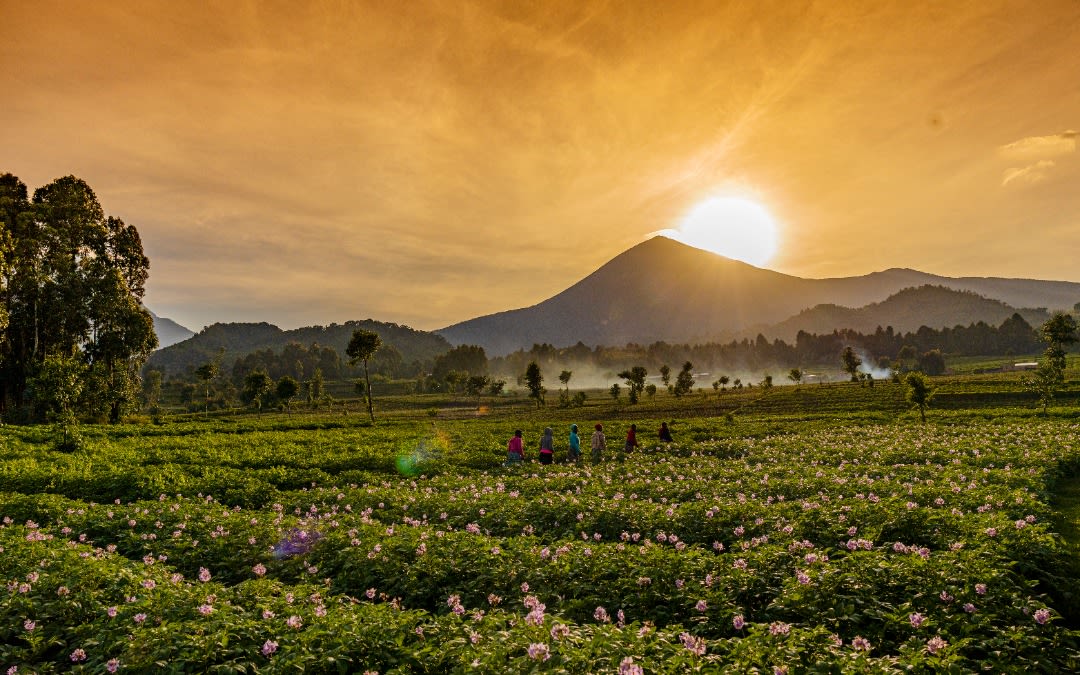
Building Community Leadership in Managing Human-wildlife Conflict
IGCP has helped to create a number of community institutions to reduce human-wildlife conflict.
Uganda: Human-Gorilla Conflict Resolution Initiative (HUGO)
In 1998, IGCP helped to set up the HUGO group around Bwindi Impenetrable National Park. Its primary task is to monitor mountain gorilla movements and respond when gorillas move beyond the boundaries of the park.
The group helps respond directly to mountain gorilla movements outside the park boundary.
Rwanda and DRC: Animateurs de Conservation (ANICO)
In 1990, IGCP helped to establish Animateurs de Conservation (ANICO). It comprises community-based volunteers who raise awareness about conservation around the Volcanoes and Virunga National Parks. Its members mobilize the community to support conservation and engage in problem animal management. ANICO has helped lobby the Rwandan government for compensation for people who suffer damages caused by problem animals.
One step further
IGCP has also strengthened the capacity of village saving and loan associations and accumulated savings and credit associations of HUGOs and ANICO around the protected areas. This has helped them to better manage their schemes through training in record keeping, governance and micro-loan management. These associations are models used to boost household incomes of individuals involved in human-wildlife conflict management while strengthening their social cohesion. Notably amid the COVID pandemic this initiative benefited households whose tourism-based earnings had collapsed.
Covid has shown how important it is for communities to have diversified sources of income, rather than being wholly reliant on tourism income. So IGCP is working with communities to sustain other income generating projects.
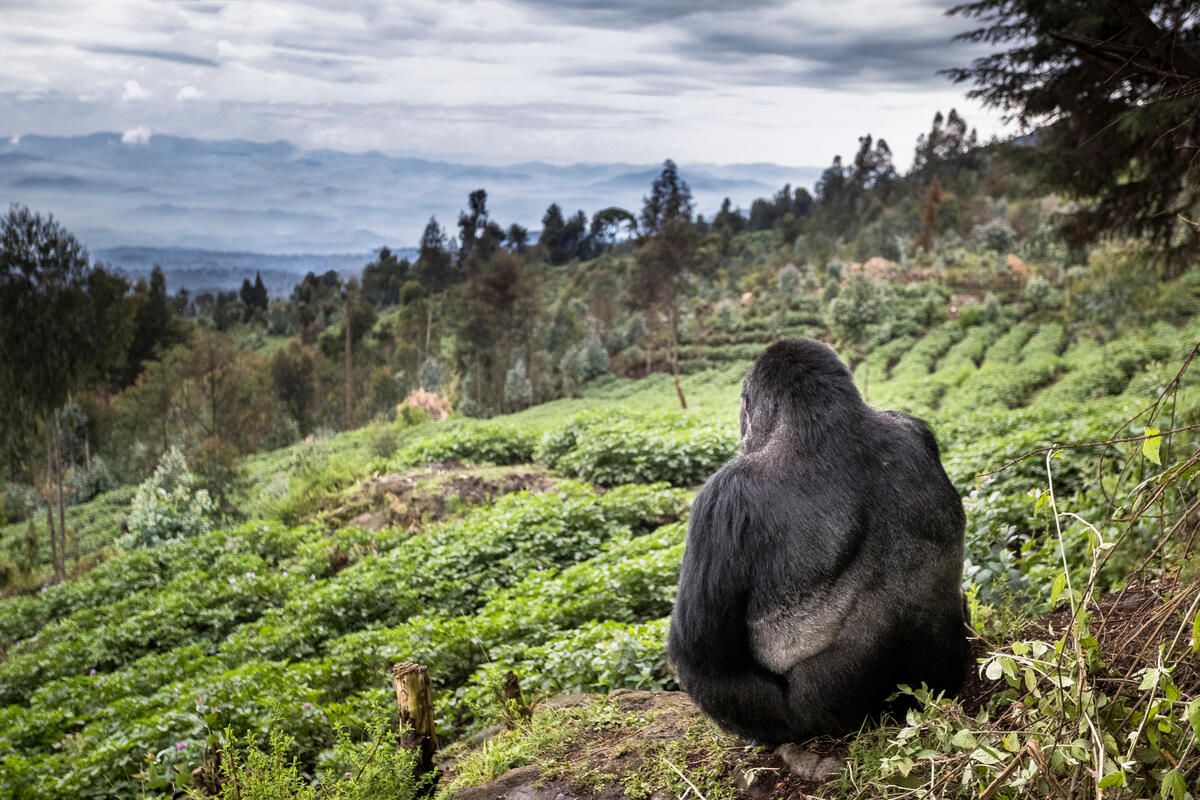
Challenges and Learnings
- Engaging communities. It is crucial to engage local communities to ensure sustainable conservation of mountain gorillas. Getting communities involved has led to positive outcomes. But to meet new challenges and the increasing needs of the communities, this local community engagement needs to be enhanced, and the benefits from mountain gorilla conservation to these communities must be increased and be shared equitably.
- Inclusiveness and gender equity. Historically, women have often been excluded from conservation activities, as they have been from many other sectors. It is not until recently that women’s participation in conservation activities has been prioritized, and that they have benefited from socio-economic initiatives linked to gorilla conservation. Considering the central role women are playing in other sectors, from the family to country levels, it is vital to mainstream their impact on wildlife conservation.







